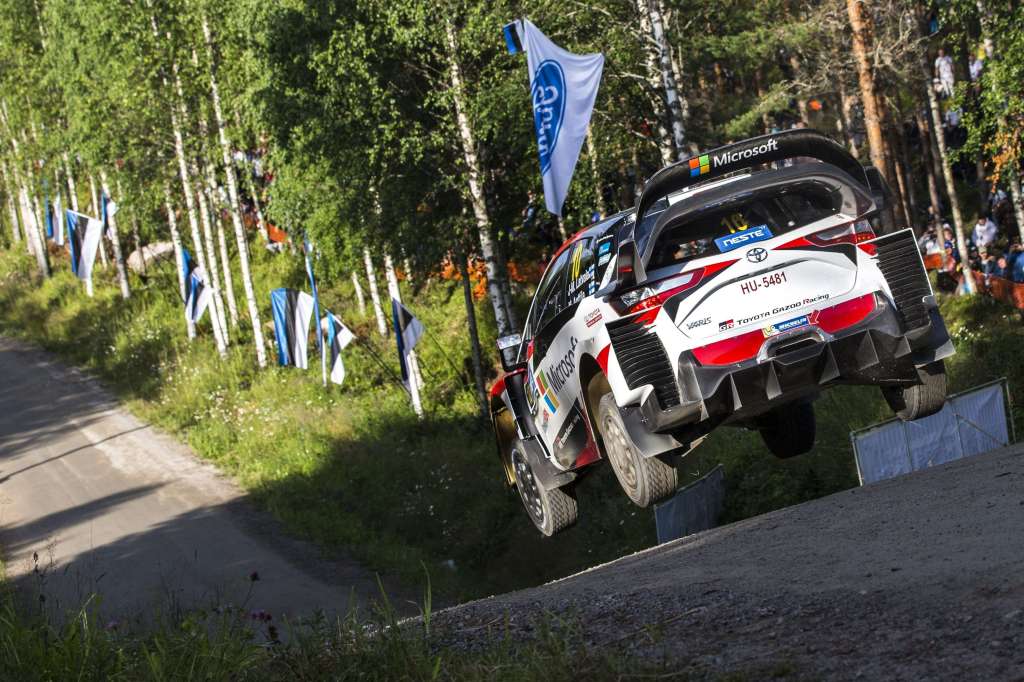(CNN) — On a rainy day in the autumn of 1987, seven-year-old Teemu Lampinen stood with his father on the sidelines of Finland’s 1000 Lakes Rally (now called the Neste Rally Finland).
He watched wide-eyed as Ari Vatanen, Finnish rally driver turned politician, roared out of the blocks in a Ford Sierra.
“I remember the car jumping and flames coming out of the fumes,” say Lampinen. For a young boy, it was a dream come true. That was the moment the self-confessed superfan fell in love with the sport.
Lampinen estimates he spends 25 to 30 days a year watching rally. As soon as the routes for an event are published, he studies the course, visits the stages and marks out the corners where he will spectate — “the corners that we expect to have action, you know, crashes,” he says.
A national obsession
In Finland, a devoted rally fan is not uncommon. The sport is hugely popular in the country, with the Neste Rally attracting hundreds of thousands of spectators each year.
“Rallying has become sort of a national sport,” Kai Tarkianen, clerk of the course for the Neste Rally, tells CNN. “A lot of the athletes that are well known outside Finland come from motorsport — obviously we have our Formula One world champions, but we also have our rallying world champions.”
With a population of just 5.5 million, Finland produces a disproportionate number of motorsport champions — a total of three in F1 and seven in rally — commonly known as the “flying Finns”. In fact, it leads both sports with its number of champions per capita.
So, what makes Finland a successful breeding ground for motorsport champions?
Wild roads
Finland’s road network is approximately 450,000 kilometers long, according to the country’s transport agency. Of this, 350,000 kilometers are private and forested roads.
For young drivers this means a vast practice arena on their doorstep.
“The guys from the village just come and close a stretch of road in the middle of the night and go and see who’s the fastest,” says Tarkianen. “Then somebody thinks, ‘hmm, this is quite fun’… and then they go into hobby rallying and work their way up from there.”
This taps into the general appeal of rallying. “(It’s) a layman’s sport,” says Tarkianen. “Anybody with a license can come up.”
Extreme conditions
Unlike circuit racing, there is no controlled environment. The sport takes place on normal public roads — it’s about going as fast as you can from a to b, in whatever conditions.
And in Finland, a country where ice and go-karting are popular pastimes, drivers are ready to take on ice, snow, dust and mud. Even the national driving test — known to be one of the most rigorous in the world — requires special training for slippery conditions.
“Finnish weather gives us a perfect base for learning driving skills,” says Lampinen. “You have to know how to drive in the winter weather, you have to know how to drive on the gravel in the summer.”
The Finnish edge
The Neste rally is famous for its jumps, blind crests, and its hard-packed gravel roads, which make it one of the fastest races in the series. As cars typically slide more easily on gravel than asphalt, it also makes it one of the most challenging.
Finnish drivers have an advantage, says Jari-Matti Latvala, a driver for TOYOTA GAZOO Racing (TGR). “You know the characteristics of the roads…so you know what to expect, where it jumps and how the corners will go.”
Now in its 68th year, the rally has become a family outing, uniting the nation, says Tom Fowler, chief engineer for TGR.
“Everybody knows something about rally in this country, that brings everybody together,” he says.
The popular support makes rally even more accessible, drives investment into infrastructure, and inspires drivers.
“Home soil brings you pressure,” says Latvala. “But on the other hand, it motivates you because you have a lot of Finnish people supporting you.”
The-CNN-Wire™ & © 2024 Cable News Network, Inc., a Time Warner Company. All rights reserved.

